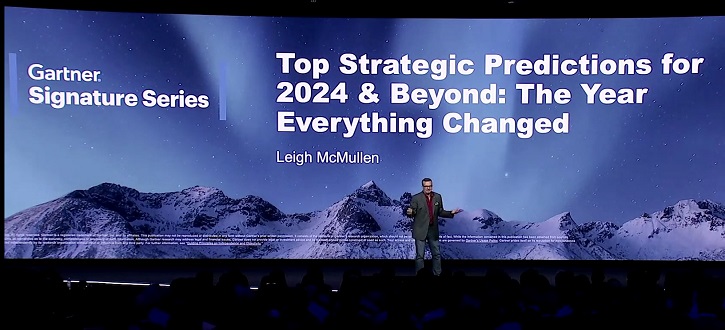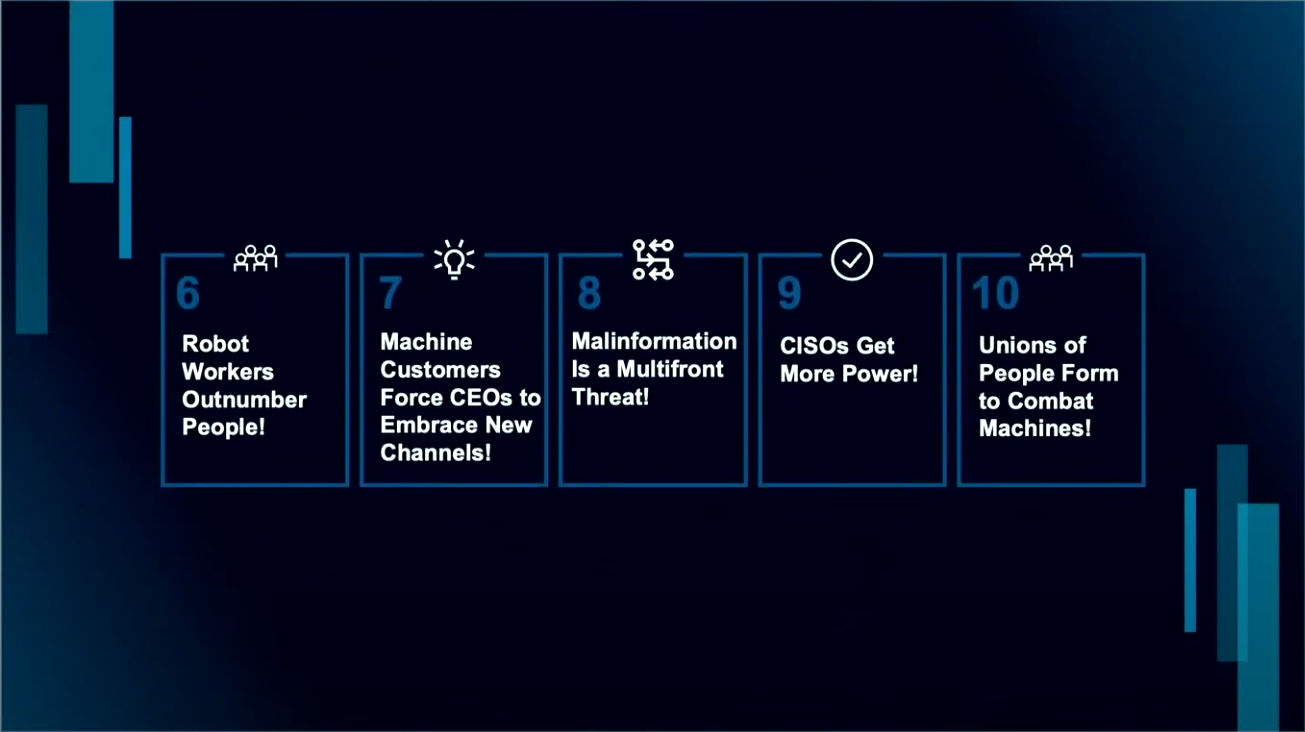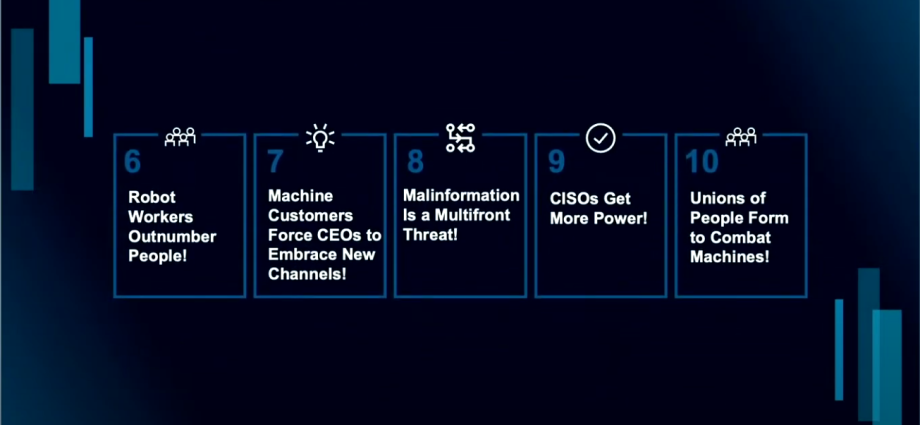- (With) enough GPUs & electricity, you have the ability to make unlimited amounts of talent
- Organisations failing to address AI anxiety could face up to 20% higher rates of turnover

Research and advisory firm, Gartner, has released new predictions spotlighting the role of Artificial Intelligence (AI) and how it will change the workplace and society over the next half decade. In particular, Gartner projects AI will become a primary gauge of national power, providing an opportunity for forward-thinking countries to make significant strides and potentially earn the title of AI superpowers, along with the caution that the technology could intensify issues such as energy demands, malinformation, and labour disputes.
The predictions illuminate the two-pronged potential of AI: a catalyst for improvement but also a potential trigger for socio-economic instability if not responsibly managed. The rise in prominance of AI is in sharp contrast to previous years, when there was audience scepticism on AI scenarios projected by the consulting company.
“Part of this story actually starts last year, (when) I was a part of the keynote team for Gardner security and risk conference,” explained Leigh McMullen (pic, above), Distinguished VP Analyst at Gartner during this year’s presentation. “The number one piece of feedback we got from that audience? It was too futuristic. Fast forward to November of 2022, open AI released chatGPT. And I don’t know if any of us feel like that.”
AI as a primary economic indicator
 “GenAI presents an opportunity to accomplish things never before possible in the scope of human existence,” said Daryl Plummer, Distinguished VP Analyst at Gartner. “CIOs and executive leaders will embrace the risks of using GenAI so they can reap the unprecedented benefits.” The increasing importance of AI as a primary economic indicator is a key prediction. “AI presents an opportunity to accomplish things never before possible in the scope of human existence,” continued Plummer. By 2027, he asserts, AI will underpin national power – a crucial indicator of the role technology will play in boosting the digital economy.
“GenAI presents an opportunity to accomplish things never before possible in the scope of human existence,” said Daryl Plummer, Distinguished VP Analyst at Gartner. “CIOs and executive leaders will embrace the risks of using GenAI so they can reap the unprecedented benefits.” The increasing importance of AI as a primary economic indicator is a key prediction. “AI presents an opportunity to accomplish things never before possible in the scope of human existence,” continued Plummer. By 2027, he asserts, AI will underpin national power – a crucial indicator of the role technology will play in boosting the digital economy.
With advances in generative AI, even smaller nations may be able to effectively compete with large countries like China that have traditionally relied on their large populations as a strength. “With AI, as long as you have enough GPUs and electricity, you have the ability to make unlimited amounts of talent,” explained McMullen, pointing to countries like Australia and states like Texas having the capacity and capability to rise and become AI superpowers.
Underpinning this is the ability of GenAI to modernise legacy business applications, reducing costs by 70% and drive productivity improvements on a scale unprecedented in the history of digital transformation. McMullen envisages GenAI acting as a Rosetta Stone, extracting business knowledge from these systems.
“The maturity of large language models (LLMs) offers an opportunity for CIOs to find credible and long-awaited mechanism for modernizing legacy business applications in a cost-effective manner,” said Plummer. “CIOs can create dedicated testing units to test the output generated by GenAI LLMs, while establishing change management and upskilling processes to enable the workforce to maximise productivity throughout the modernization cycle.”
Job security concerns and concerns about information security
 On the other hand, AI’s impressive capabilities have raised concerns about job security and worker displacement. Gartner warns that organisations failing to address this anxiety could face higher rates of turnover, up to 20% higher than current levels.
On the other hand, AI’s impressive capabilities have raised concerns about job security and worker displacement. Gartner warns that organisations failing to address this anxiety could face higher rates of turnover, up to 20% higher than current levels.
Simultaneously, the threat of malinformation is skyrocketing. Plummer is quick to remind us that “bad actors” could exploit the increasing power and availability of GenAI. By 2028, it is expected that enterprise expenditure on combating malinformation will exceed US$30 billion. This necessitates businesses across the globe to monitor these threats closely and to adopt robust technologies to counter them. By 2026, up to 45% of chief information security officers (CISOs) are expected to expand their remit beyond cybersecurity, placing a greater emphasis on reskilling and upskilling.
The 2024 landscape also presents a remarkable picture for sectors like manufacturing, retail, and logistics. Due to human labour shortages, there’s a predicted rise of smart robot workers. “Robotic technology is advancing rapidly, making robots viable for a growing number of front-line jobs,” says Plummer.
Indeed, the whole future of work for white-collar labour will also face unprecedented change. “We are literally the last generation of managers who get to make those decisions (about) buying, acquiring and building decision making machines. And after those decisions are made that will become a one way door, which will become very, very difficult to reverse,” said McMullen.
Labour and energy issues ahead
As a result, Gartner also predicts a 1,000% increase in the rate of unionisation among knowledge workers, motivated by the adoption of GenAI. Consequently, organisations will need to actively invest in continuous learning and development initiatives to remain competitive, and to prepare themselves for the new way of working.
There will also be an impact on energy-aware operations. Plummers points out that, against the backdrop of the G20 nations experiencing monthly electricity rationing by 2026, conscious energy consumption could be either a company’s competitive advantage or significant failure risk. Companies must, therefore, look to reduce energy consumption, leveraging efficiency for establishing long-term competitive advantage.
Altogether, Gartner’s predictions for the future are both about the opportunities that will be available, and a harbinger of the issues it will carry along with it. As McMullen puts it, “The future’s too futuristic (now). I don’t think it feels like science fiction. In fact, I think for a lot of us, it might feel like we’re this skier, we’re on this hill, and generative AI is this slippery slope.”
Gartner’s top 10 strategic predictions for 2024 and beyond:
- By 2026, 30% of workers will leverage digital charisma filters to achieve previously unattainable advances in their career.
- By 2027, the productivity value of AI will be recognized as a primary economic indicator of national power.
- By 2027, 25% of Fortune 500 companies will actively recruit neurodivergent talent across conditions like autism, ADHD and dyslexia to improve business performance.
- By 2026, 50% of G20 members will experience monthly electricity rationing, turning energy-aware operations into either a competitive advantage or a major failure risk.
- By 2027, GenAI tools will be used to explain legacy business applications and create appropriate replacements, reducing modernization costs by 70%.
- By 2028, there will be more smart robots than frontline workers in manufacturing, retail and logistics due to labor shortages.
- Through 2026, 30% of large companies will have a dedicated business unit or sales channel to access fast-growing machine customer markets.
- By 2028, enterprise spend on battling malinformation will surpass $30 billion, cannibalizing 10% of marketing and cybersecurity budgets to combat a multifront threat.
- By 2027, 45% of chief information security officers (CISOs) will expand their remit beyond cybersecurity, due to increasing regulatory pressure and attack surface expansion.
- By 2028, the rate of unionization among knowledge workers will increase by 1,000%, motivated by the adoption of GenAI.

